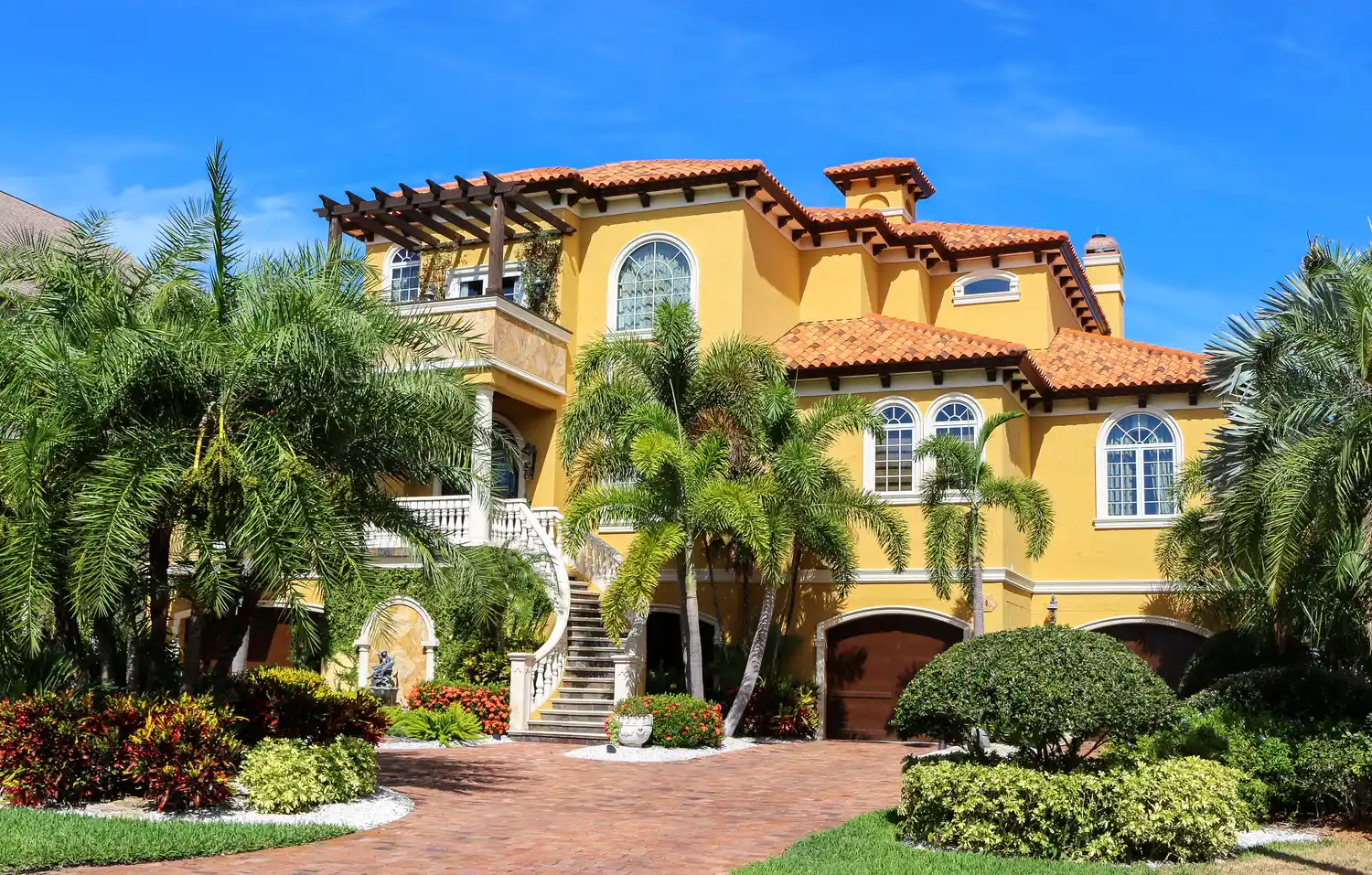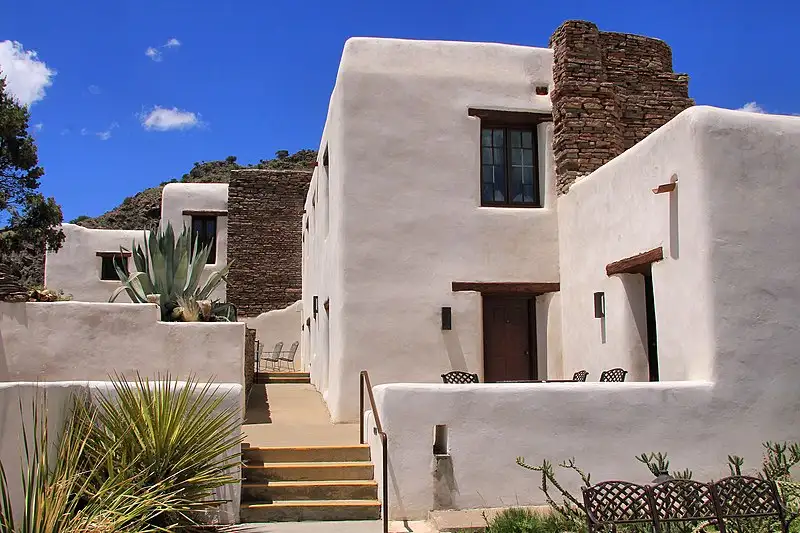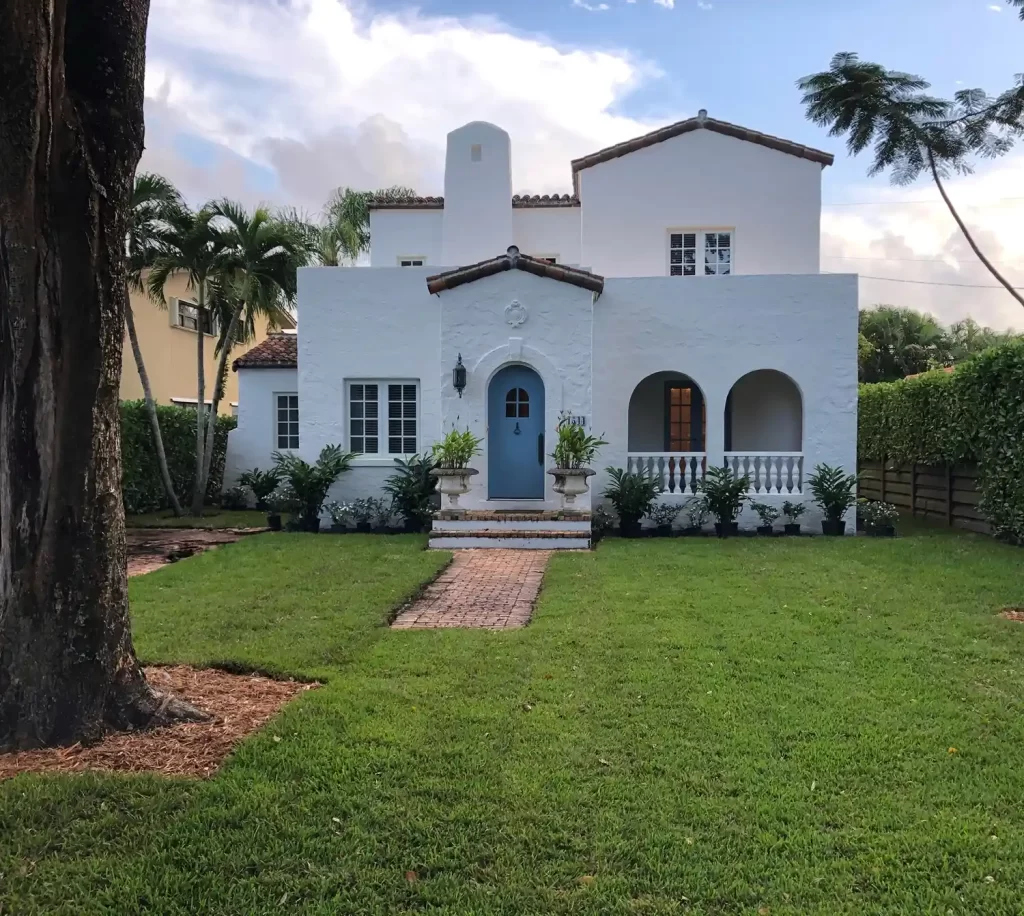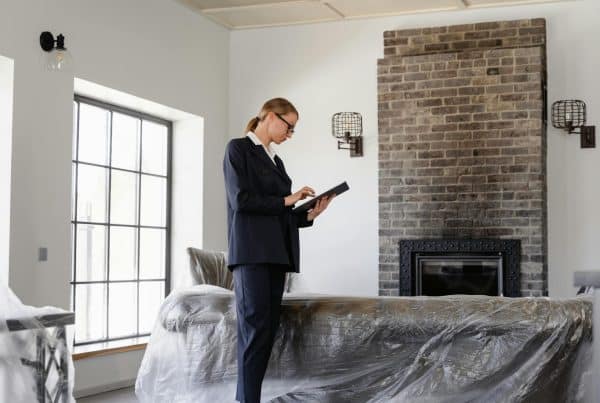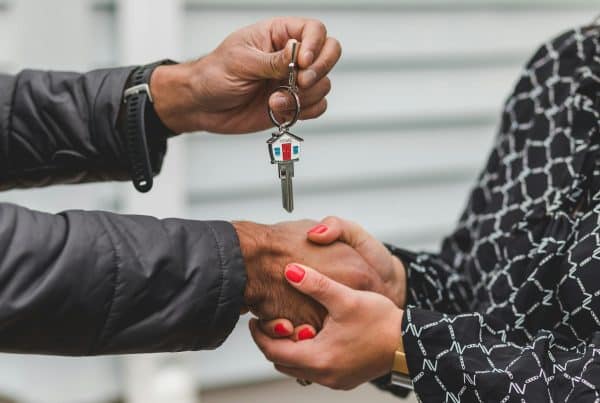Spanish style homes have long delighted homeowners, thanks to their enchanting blend of Old World charm and modern functionality.
With roots in different regions across Spain, today’s Spanish style houses benefit from a rich history. They draw inspiration from different subcultures and design approaches, which include Mediterranean, Moorish, and other influences.
No wonder why, even after hundreds of years, Spanish style homes remain a beloved choice for homeowners, with plenty of options available in Las Vegas.
To learn more about Spanish style homes, keep reading our list of 12 interesting facts. If you’d like to begin your home search, check out our Home Search tool.
12 Interesting Facts about Spanish Style Homes
1. There are seven common types of Spanish style homes
Spanish Colonial – Spanish Colonial homes reflect the early Spanish settlements in the Americas. They feature thick adobe or stucco walls, small windows, and clay tile roofs. Courtyards and arcade walkways are also common elements.
Mission Revival – This style is inspired by Spanish missions built along the coast of California. Mission Revival homes often have stucco exteriors, red clay tile roofs, arched doorways, and decorative features, such as quatrefoil windows.
Spanish Eclectic – Spanish Eclectic homes combine elements from different Spanish architectural styles. These homes may draw inspiration from Moorish, Byzantine, Roman, or Renaissance styles. They often include stucco walls, low-pitched roofs, and decorative tilework.
Mediterranean Revival – Mediterranean Revival homes draw inspiration from the coastal regions of Spain, Italy, and France. They typically have stucco exteriors, red tile roofs, and wrought-iron accents. They may also include arches, courtyards, and balconies.
Monterey Style – The Monterey style, also known as Monterey Colonial or Monterey Revival, combines elements of Spanish Colonial and New England Colonial styles. Key features of Monterey homes include two-story structures with low-pitched gable roofs, balconies with wooden railings, and adobe or stucco exteriors.
Floridian – Floridian architecture draws from different styles, including Mediterranean Revival, Spanish Eclectic, and Art Deco. Floridian homes often have stucco exteriors, tile roofs, and large windows to allow for natural light and ventilation. They may also include features like verandas, courtyards, and decorative ironwork.
Pueblo Revival – Pueblo Revival is a distinct architectural style primarily influenced by the traditional design elements of the Pueblo Indians of the American Southwest. Pueblo Revival homes typically have flat roofs with exposed wooden beams, earth-toned stucco exteriors, rounded corners, and small windows. They also sometimes incorporate courtyards, patios, or terraces, connecting indoor and outdoor spaces.
2. The first Spanish style houses were built in the 1600s
The first Spanish-style houses can be traced back to the Spanish Colonial period. Although this period began in the late 15th century, the earliest examples of Spanish-style houses in the Americas date back to the 16th century.
It wasn’t until the 17th century that Spanish style homes were built in earnest in the Americas.
As Spanish influence spread across the Americas, this architecture adapted to different areas. This gave rise to regional variations such as Spanish Colonial, Pueblo Revival, and Mission Revival.
3. Some Spanish style homes have tower-like structures or turrets
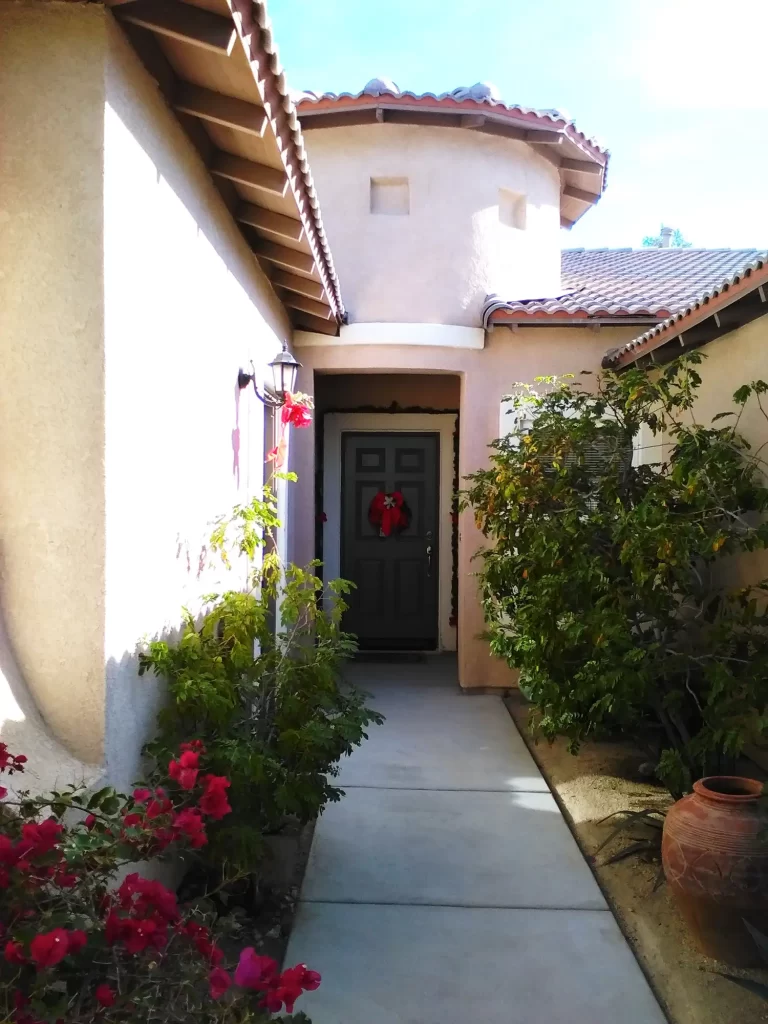
Spanish style home with turret
Some Spanish style homes include tower-like structures or turrets inspired by the Moorish and Mediterranean architectural styles.
Incorporating turrets into Spanish style homes serves several purposes.
It adds an aesthetic appeal and a sense of history to the architecture, giving these style homes a unique charm. It provides additional living space, often in the form of small rooms.
Additionally, it allows for wider views of the surrounding landscape since turrets often have windows on multiple sides.
Historically, turrets were associated with wealth and power, as they were primarily found in castles and palaces. Incorporating a turret into a Spanish style home can evoke a sense of prestige and elegance.
4. Indoor-outdoor flow points are common in Spanish-style homes
Many Spanish style homes feature large sliding doors or large French doors that open onto courtyards, patios, or gardens. This helps create a seamless flow between indoor and outdoor spaces.
Indoor-outdoor flow points, in effect, extend the interior living space, providing additional areas for relaxation, dining, and socializing.
5. White stucco walls help reflect the sun and moderate interior temperature
Many Spanish style homes feature whitewashed exteriors, which help to reflect sunlight and keep the interiors cool. This technique involves applying a thin layer of lime-based paint or a mixture of water, lime, and pigment to the exterior walls.
Benefits of white lime-based exteriors include:
- Temperature regulation
- Durability (The lime-based whitewash has natural antimicrobial properties that can protect against mold and mildew.)
- Low-cost and eco-friendly
- Aesthetic appeal
- Versatility (Whitewashing can be adapted to create various shades and textures. This allows homeowners to customize their home exterior to their personal taste.)
6. Some Spanish styles homes have bread ovens and outdoor kitchens
In some Spanish style homes, you may find traditional bread ovens or outdoor kitchens, which reflect the importance of food and communal cooking in Mediterranean culture.
In Spanish style homes, the outdoor kitchen serves as a focal point for social gatherings.
These kitchens are often designed with both functionality and aesthetics in mind. As such, they feature built-in grills, countertops, sinks, and storage areas. Decorative elements include tilework and pergolas.
Spanish style homes are often found in regions with warm climates, so having an outdoor kitchen is a practical and enjoyable feature.
7. Shade is important in Spanish style homes
In Spanish style homes, the importance of shade cannot be overstated. This can be seen in the use of arcades, covered porches, and pergolas, which offer protection from the sun.
Likewise, Spanish style homes place a lot of importance on low-pitched roofs, overhanging eaves, and thick roofing tiles to further regulate temperatures.
Interestingly, low-pitched roofs are more efficient at keeping interiors cool by minimizing heat absorption and allowing for better air circulation.
8. Spanish style architecture became popular in the USA during the early 1900s
Spanish style homes have captivated the imaginations of architects and homeowners alike for centuries.
This is no doubt why notable architects like Wallace Neff, George Washington Smith, and Addison Mizner fell in love with the style. They helped popularize and develop it during the early 20th century.
In fact, throughout the 20th century and into the 21st, Spanish style homes have experienced numerous revivals and adaptations.
Modern architects have continued to draw inspiration from the work of Neff, Smith, and Mizner, reinterpreting Spanish style homes to suit contemporary preferences.
From the use of energy-efficient features to the blending of Spanish design elements with other architectural influences, these adaptations demonstrate the staying power of Spanish style homes.
9. Some Spanish style homes are adapted to multi-generational living
One of the defining characteristics of Spanish style homes is their ability to accommodate multi-generational living. These homes boast flexible and adaptable floor plans designed to create comfortable spaces for extended families.
As a result, Spanish style homes are more than just beautiful architectural masterpieces; they are thoughtfully designed living spaces that accommodate large families.
This approach stems from the significance of family and community within Mediterranean culture.
10. Spanish homes can sometimes have hacienda layouts
Some Spanish style homes are designed in a hacienda-style layout, with a central courtyard surrounded by bedrooms.
The design encourages socialization among family members and guests.
It also provides an opportunity for homeowners to showcase their personal taste in landscaping and outdoor design. This includes incorporating lush greenery, fountains, and comfortable seating areas.
11. Cobblestone pavers are occasionally used for Spanish style homes
Cobblestone driveways and walkways have long been part of some Spanish style homes, imbuing them with undeniable charm.
The right kind of cobblestone paver is beautiful, evoking a sense of tradition and craftsmanship. Beyond their visual appeal, though, cobblestone driveways and walkways offer practical benefits, such as durability, permeability, and low maintenance.
The use of cobblestone pavers harks back to the days of old European towns and villages, where such materials were commonly used for roads and paths. Today, these pavers continue to provide an authentic touch while offering a functional outdoor surface.
With a variety of colors, shapes, and sizes available, cobblestone pavers can be arranged in intricate patterns or simple layouts, allowing homeowners to customize their driveways and walkways.
12. Spanish style homes have some of the best hand-painted ceramics
Hand-painted ceramics have long been a part of Mediterranean art and culture, and their inclusion in Spanish style homes is a testament to their enduring appeal.
Spanish style homes have some absolutely gorgeous home ceramics, which can range from functional pieces like plates and bowls to purely ornamental objects like tiles and wall plaques.
They can also be incorporated as backsplashes in kitchens and bathrooms.
Drawing inspiration from a rich history, hand-painted ceramics in Spanish style homes often feature traditional motifs. These include floral designs, geometric patterns, and scenes from daily life.
The use of vivid hues, such as blues, greens, yellows, and reds, evokes the azure waters and sun-soaked landscapes of the Mediterranean region.
Las Vegas Gated Communities with Spanish Style Homes
Check out our list of gated communities in Las Vegas, which may have Spanish style homes currently on the market.
» MORE: Spanish vs Mediterranean House: 5 Differences + Similarities
» MORE: 9 Facts About Mediterranean Style Homes + What Is A Villa?
» MORE: 9 Facts About Hacienda Style Homes + Hacienda vs Spanish Homes
Blog Post Image Source: Indian Lodge TX Rooms2
Photographer: Larry D. Moore
Source: Wikimedia Commons
License: CC BY 4.0
Copyright © 2015 Larry D. Moore
This work is licensed under the Creative Commons Attribution 4.0 International license. To view a copy of this license, visit the link above. This image may have been resized. Disclaimer: The use of this image does not imply endorsement by the photographer or Wikimedia Commons. The image is used solely for illustrative purposes in the context of discussing Spanish style homes.
Blog Post Image Source: The Permuy House 2020
Photographer: Atlasunivers
Source: Wikimedia Commons
License: CC BY-SA 4.0
Copyright © 2020 Atlasunivers
This work is licensed under the Creative Commons Attribution-Share Alike 4.0 International license. To view a copy of this license, visit the link above. No changes were made to this image. Disclaimer: The use of this image does not imply endorsement by the photographer or Wikimedia Commons. The image is used solely for illustrative purposes in the context of discussing Spanish style homes.

